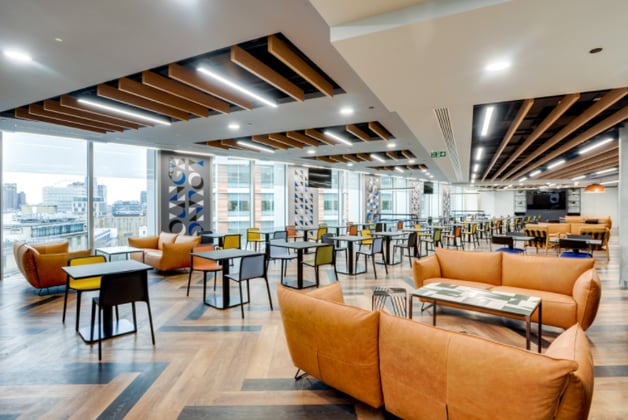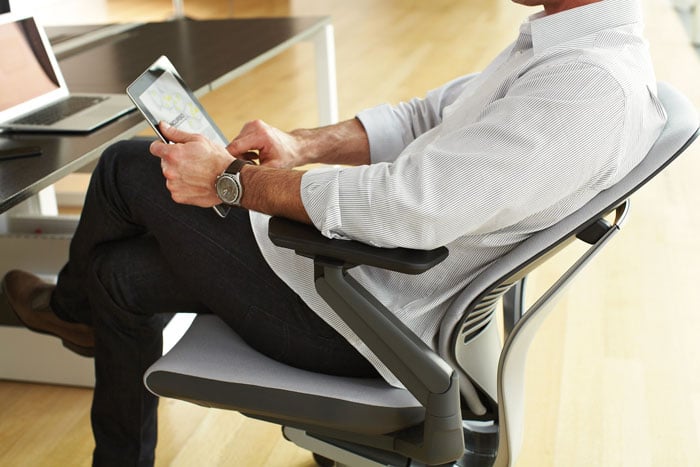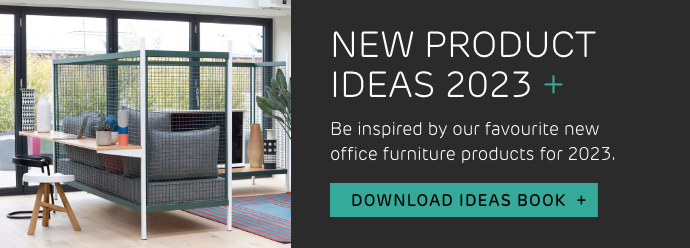Ever wondered why quality office furniture is more expensive than the home office equipment you can source from your local retail park? This blog explores the differences in expectations around design, durability and flexibility between the commercial and domestic market.
The flat pack revolution scratched an itch in the general public for access to cheaper and more disposable, domestic furniture design. And it had a knock on effect for the commercial sector, too. In offices around the world, bosses began to question how much they were paying for the seating, desks and storage they used every day.
For some, these questions still remain. Can you - or should you - cut corners when it comes to commercial furniture procurement? How different can furniture for office and domestic settings actually be?

6 reasons quality office furniture is more expensive than domestic
1. Quality and durability
Think about the daily punishment a typical office chair endures. Pulled out and spun round; shoved, pushed and rolled across the office. If it’s used in a hot-desking scenario it’s going to be reset and reconfigured countless times - subject to multiple different weight stresses, not to mention wiped with many greasy lunch fingers.
What’s the difference in quality expectations between commercial and domestic furniture?
Commercial furniture typically comes with 10 years warranty, whereas most domestic furniture has warranties of 12 months to 3 years.
To last ten years subject to typical office usage requires a different level of quality. Robust materials and construction methods are necessary with quality assured through rigorous testing including:
- Static load tests
- Dynamic load tests
- Stability tests
- Impact tests
What's entailed in impact testing?
The durability of fabric is tested with the Martindale abrasion rub test - i.e. testing how many times oscillating sandpaper or wool can be applied to the fabric before it starts to show distress.
Acceptable scores on the ‘rub test’ for domestic upholstery might be 20,000, but office furniture requires scores in excess of 30,000, rising to 40,000 plus for heavy commercial use.
Design considerations like repairability, protective coatings, colour choices and cleanability all have to be taken into account with furniture designed for use in offices.
The processes and quality required to design and manufacture furniture with enough durability to support ten-year warranties requires significant investment.
2. Ergonomic Design
Research into workplace injury says that poor furniture design costs companies billions every year. Desks and chairs that do not support good posture and aren’t adjustable, can have long-term effects on those who use them.
“The US Center for Disease Control and Prevention (CDC), estimates back pain costs employers $1,685 per employee every year. Across the nation, that equates to a loss to businesses of $225.8 billion”
Ergonomics play a significant role in the design of office furniture to combat these problems. Ergonomic furniture is created to support the human body and promote healthy posture, reducing the risk of work-related injuries and improving overall productivity.
Designing and manufacturing ergonomic office furniture requires extensive research, development, and testing, which inevitably drives up the price.
For example, when Steelcase developed the Gesture chair, they conducted a global posture study in 11 countries and used the results to create a brand-new seating experience that's designed for the interface between users and the modern technologies that we use today. It was inspired by the movement of the human body and the need to constantly shift postures throughout the day to support different modes of work.

"The results of the global posture study basically made us deconstruct the chair and go back to the essence of the seating experience. We assembled a global team and took inspiration from the human body at work and how it interacts with modern technologies. The human body wants to be fluid and be supported dynamically. Thats a big challenge and it caused us to fundamentally rethink how we make a chair."
James Ludwig, Steelcase Vice President Global Design + Engineering
Ergonomic improvement, in this case, was a holistic endeavour, including observing user behaviour and redesigning the seating experience to make their chairs more comfortable and practical for the way we work today.
For teams who work long hours and are continually shifting postures and work locations - improvements in seating technology are crucial for wellness and productivity. By investing in the comfort of your workers you are not only safeguarding their health, but you are investing in your business as a whole.
3. Customisation and modularity
Office furniture needs to be customisable, but building flexibility into designs inevitably incurs extra costs.
Commercial furniture retailers need to offer complete flexibility in the choice of finishes, fabrics, and functionality. In recent years manufacturers have also been focusing on modularity to improve performance. They’ve made furniture as fixable and configurable as possible to extend its life span and adapt to changing business requirements over time.
But the more customisable a piece of furniture is, the higher the cost. Designs are more complex. Manufacturers must produce and stock a wide range of components and finishes to service diverse, customer needs.
Think about the range and possibilities offered by agile furniture solutions - in which a single piece of furniture can be used for many different activities.
.jpg?width=691&height=461&name=ServiceNow-London-(186).jpg)
Greater choice and flexibility should ensure that buyers make fewer quality compromises in their selection. This will mean the furniture itself is likely to meet business requirements for longer.
4. Shipping and Assembly
The shipping and assembly of office furniture can add significantly to the overall cost. Due to their size and weight, office furniture items often require specialized shipping and handling methods.
In many cases, professional assembly services may also be needed to ensure that the furniture is correctly and safely installed. These additional costs can be substantial, particularly for larger items or full office fit-outs.
5. Compliance
In the UK, commercial furniture testing standards aim to ensure safety, quality, and durability in various commercial settings. Key standards include BS EN 16139 for non-domestic seating, BS EN 15372 for non-domestic tables, BS EN 1022 for seating stability, BS EN 1728 for seating strength and durability, BS EN 527 for office workstations, and BS EN 1335 for office chairs.
These standards can require durability for commercial furniture way beyond what is expected elsewhere - which in turn requires greater quality assurance, as well as clever design solutions to ensure products remain light and flexible enough to be of practical use in the modern workplace.
Fire resistance is also an essential aspect of compliance. For residential furniture, fabrics and upholstery must meet the standards of BS EN 597-1: 2015 and BS EN 597-2: 2015, which evaluate their resistance to a smouldering cigarette and a burning match.
In contrast, commercial furniture, used in public spaces, must adhere to a significantly higher fire resistance standard: CRIB5. CRIB tests assess a material's resistance to a sustained fire source rather than a temporary one. Commercial furniture must be substantially less flammable than residential options.
6. Sustainability
More and more, sustainability requirements are becoming part of office furniture specifications which in turn seem to be adding to costs.
And, on the face of it, sustainability is adding an extra cost burden for buyers. Using more robust and organic materials while designing with greater modularity (to encourage repair and replacement) inevitably carries with it more upfront cost. Long term, though, those investments will increase the lifespan of furniture and reduce the escalating costs of disposal.
Buying sustainably is gradually becoming cheaper - and over time suppliers will be able to improve quality and price by behaving more responsibly and sourcing more locally throughout the production cycle:
-
Using local supply chains
-
Using more sustainable and recyclable raw materials
-
Consuming less energy in production
-
Creatively reusing wasted materials
-
Minimising excessive and unrecyclable packaging
Don’t forget also there are many ways offices can make cheaper and more sustainable furniture choices. There are many recycling and buyback schemes that offices can sign up to, which will enable more responsible and cost-effective furniture procurement, while ensuring your workers have access to the quality furniture they need.
Buying quality office furniture can be expensive, but there are many good reasons not to compromise - and many ways of ensuring you can maximise value out of the items you buy.










